Guilin, nestled in southern China, is renowned for its breathtaking Karst landscape that captivates visitors from around the world. Before embarking on your journey to Guilin, it's essential to familiarize yourself with these 30+ essential travel tips and frequently asked questions (FAQs), ensuring a smooth and unforgettable travel experience.
With a visit to Guilin, you can immerse yourself in 4 highly recommended destinations: (1) Guilin downtown area, home to the iconic Elephant Trunk Hill and the enchanting Reed Flute Cave; (2) Yangshuo, where you can explore the vibrant West Street and experience the serenity of the idyllic Yangshuo Countryside; (3) Li River's Xingping Town, offering an authentic taste of the river's essence and incredible photography opportunities; and (4) the awe-inspiring Longji Rice Terraces, where you can delve into the captivating culture of the Yao and Zhuang ethnic groups while embarking on thrilling hiking adventures.
To ensure a seamless Guilin tour, familiarize yourself with the best time to visit, transportation options, top attractions, exciting activities, nightlife hotspots, and the delectable local cuisine that Guilin has to offer. By doing so, you'll create unforgettable experiences in each destination, discovering the true essence of Guilin's natural beauty and brilliant ethnic culture.
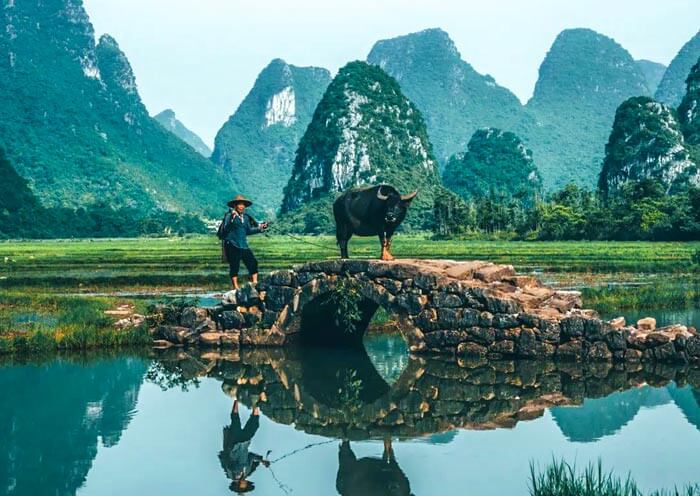
"Excellent Tour, best experience"
"A unique experience despite a difficult context thanks
to an experience team of organisers"
1. What are the top attractions to visit in Guilin?+
The top attractions to visit in Guilin downtown are:
2. When is the best time to visit Guilin?+
It is recommended to travel to Guilin from April to October during which there are many sunny days, greener hills and clearer river water.
The summer temperature in Guilin can be as high as 37ºC. It is best to bring something convenient for summer, such as sunscreen, sunglasses, hat, mosquito repellent, etc.r.
3. How many days do you need in Guilin?+
The number of days you need in Guilin depends on your travel preferences and the depth of exploration you desire. Usually, it is suggested to spend at least 2 days in Guilin and Yangshuo to experience the main highlights. It allows you to visit popular attractions such as the Li River, Elephant Trunk Hill, Reed Flute Cave, and explore the picturesque Yangshuo countryside.
However, if you wish to delve deeper into the region and immerse yourself in its natural beauty, culture, and activities, it is recommended to allocate 3 to 6 days or more. You can have in-depth exploration of attractions like the Longji Rice Terraces, Yangshuo's karst landscape, Xingping Town on the bank of the Li River, ethnic minority villages, cycling or hiking adventures, and leisurely river cruises.
You can check more on: How to Plan a Guilin Tour | Ultimate Guilin Planning Guide >>
4. Can I have cultural experience in Guilin?+
Though Guilin is primarily known as a natural destination, it also offers a rich cultural experience that allows visitors to immerse themselves in local traditions, customs, and ethnic minority cultures.
(1) Ethnic Minority Villages: Explore the nearby ethnic minority villages, such as the Longji Terraced Fields area or the villages around Yangshuo. Interact with locals from the Zhuang and Yao ethnic groups, learn about their unique traditions, witness their traditional clothing and handicrafts, and even participate in cultural activities.
(2) Calligraphy & Traditional Fan Making: Engage in activities like calligraphy, Taichi, or cooking classes in Yangshuo, or try your hand at making a traditional fan in Fuli Town.
(3) Traditional Performances & Night Shows: Attend cultural performances that showcase the vibrant traditions of Guilin. Enjoy traditional music, dance, and singing performances that highlight the local culture and ethnic minority influences. The Liu Sanjie Light Show in Yangshuo, which combines music, dance, and stunning natural surroundings, is a particularly popular performance.
If you are interested in these cultural activities, we can include them in your Guilin tour to ensure a well-rounded and enriching experience.
5. Guilin or Yangshuo, which one is recommended?+
Both Guilin and Yangshuo are famous destinations in China, each with its own unique appeal. If time allows, it's often recommended to experience both. Start in Guilin to take in the city's attractions and then travel down the Li River to Yangshuo to immerse yourself in the countryside and enjoy outdoor activities. If you have to choose just one and prefer a city atmosphere with natural landmarks, choose Guilin. However, if you're after rural landscapes, outdoor adventures, and a more relaxed vibe, Yangshuo might be your best bet. Here's a comparison to help you make an informed decision:
Guilin
Easy Access: Guilin has an airport and a train station, making it accessible from various parts of China.
Cityscape: Guilin is a moderately-sized city with a mix of urban conveniences and natural beauty. It offers shopping, dining, and a variety of accommodations.
Elephant Trunk Hill: An iconic natural landmark of Guilin, it looks like an elephant dipping its trunk into the Li River.
Reed Flute Cave: A stunning limestone cave adorned with a mesmerizing variety of stalactites, stalagmites, and rock formations.
Yangshuo
Rural Beauty: Yangshuo offers stunning landscapes characterized by limestone karsts, picturesque rivers, and traditional villages.
Li River: A cruise down the Li River between Guilin and Yangshuo provides some of the most iconic and scenic vistas China has to offer.
Outdoor Activities: Yangshuo is perfect for those looking for outdoor adventures like rock climbing, caving, bamboo rafting, cycling, and hiking.
Close to Nature: The accommodations in Yangshuo often offer beautiful views of the surrounding landscapes and a more laid-back, close-to-nature feel compared to the urban hotels in Guilin.
1. Where is Yangshuo?+
Yangshuo is located in the Guangxi Zhuang Autonomous Region of southern China. It's situated to the southeast of Guilin City, along the banks of the Li River . Known for its stunning karst landscape and picturesque countryside, Yangshuo has become a renowned tourist destination and is easily accessible from Guilin via road or river.
2. What are the must-see attractions in Yangshuo?+
Countryside Biking or Hiking : A journey through scenic rice paddies and traditional village, choosing the pace of either biking or hiking.
Yulong River: Ideal for tranquil bamboo rafting with picturesque views.
Moon Hill: A hikeable peak known for its moon-shaped arch and panoramic vistas.
West Street: Yangshuo's vibrant heart with a mix of Chinese and Western cultures, offering shopping and dining.
Rock Climbing: Yangshuo is considered one of the best rock climbing destinations in Asia, with numerous peaks suitable for all skill levels.
Caving: Yangshuo is home to several impressive karst caves, spelunkers can explore a labyrinth of tunnels, passages, and underground rivers, etc.
Impression Sanjie Liu: A nighttime riverside show highlighting local culture and music.
Cormorant Fishing: Experience a timeless tradition as skilled handlers command cormorants to fish in the dimming evening light.
Xingping Ancient Town: A historic town with charming streets and iconic river views.
Fuli Town: A gem steeped in tradition, famous for its preserved architecture, artisanal fan-making, and vibrant local markets.
3. How many days should I allocate for a comprehensive Yangshuo tour?+
For a comprehensive experience, a 3 to 4-day tour is recommended. However, you can still get a good feel for the area with a 2-day itinerary.
4. What is the best time to visit Yangshuo?+
5. How to get to Yangshuo?+
From Guilin: The most common route is from Guilin. You can take a bus, taxi, or the picturesque Li River cruise. The cruise offers scenic views of the stunning karst landscape and usually takes 4-5 hours.
By Air: While Yangshuo doesn't have its own airport, the nearest is Guilin Liangjiang International Airport. From there, you can take a bus or taxi to Yangshuo, which is approximately 70 kilometers away.
By Train: Guilin has two main train stations - Guilin Railway Station and Guilin North Railway Station. Both stations have trains coming from major cities like Beijing, Shanghai, and Guangzhou. Upon arrival in Guilin, you can continue your journey to Yangshuo by bus or taxi.
Direct Trains to Yangshuo: Yangshuo also has its own train station, which connects to some major cities. However, this station is located a bit outside the main town, so you'd need a short taxi or bus ride to reach the town center.
6. Do the tours include activities like bamboo rafting or cycling?+
Yes, many of our tours incorporate activities such as bamboo rafting and cycling within the itinerary. In addition to these, our theme tours often feature a plethora of outdoor adventures like caving, rock climbing, Via Ferrata, and SUP. For those interested in immersing themselves in local culture, we also offer experiences like cooking classes, paper fan painting, Cormorant Fishing, and the renowned Impression Sanjie Liu performance, among others. Additionally, for those seeking a unique and personalized journey, we offer tailor-made experiences to ensure every traveler's desires and interests are catered to, creating a memorable exploration of Yangshuo.
1. How long is the Li River cruise and where do I have lunch?+
The Li River cruise from Guilin to Yangshuo is 83 kilometers long. You will spend approximately 4 hours on a ferry. During the rainy season, the water level is high and the cruise time may be less than 3.5 hours. During the low season, the cruise time may be longer. Your lunch will be served on the ferry at around 12 pm.
2. Where to board a Li River cruise from Guilin?+
If you take a 3-star Li River cruise, it departs from Mopanshan Pier (磨盘山码头) and arrives at Shuidongmen dock in Yangshuo. However, if you opt for a 4-star Li River cruise, it starts from Zhujiang Pier (竹江码头) and arrives at Longtoushan dock in Yangshuo.
It takes approximately 1 hour to travel from the Guilin downtown area to the respective piers. Please ensure you allocate enough time for transportation.
Learn more about: Li River Cruise: From Guilin to Yangshuo by Boat >>
3. What are the highlights along the Li River?+
The Li River is renowned for its stunning natural beauty and picturesque landscapes. Here are some of the highlights you can expect along the Li River of Guilin:
The most iconic feature of the Li River is its karst mountains. These limestone peaks rise majestically from the riverbanks, creating breathtaking and otherworldly scenery. Nine Horses Fresco Hill is a natural landscape that resembles nine galloping horses when viewed from a specific angle. Yellow Cloth Shoal is the typical scenery depicted on the 20 Yuan banknote.
Xingping Ancient Town on the banks: The town itself is an attraction, with well-preserved Ming and Qing dynasty architecture lining its narrow streets. During the cruise, you can enjoy an overlook of this beautiful small town.
Yangshuo: As you approach Yangshuo, the landscape transforms into a picturesque countryside dotted with rice paddies, bamboo groves, and traditional villages. This scenic beauty provides a peaceful and idyllic backdrop for your Guilin Li River journey.
1. What are the Top 10 Most Beautiful Rice Terrace in China?+
China has over 2000 years' history to cultivated the rice terrace since Qin Dynasty (221BC-207BC). Most of China's rice terraces are located in South China and Southeast China, like Yunnan, Guangxi, Guizhou, Jiangxi, Fujian. Here are the Top 10 Most Beautiful Rice Terraces in China for your reference:
Top 1: Yuanyang Hani Rice Terraces (元阳梯田, Yunnan): 1300 Years' Carving of the Earth
2. What are the top 7 countries with beautiful rice terraces in the world?+
Beautiful rice terraces can be found in several countries around the world. Some of the countries known for their stunning rice terraces include:
1. China - China is home to numerous famous rice terraces, such as Longji Rice Terraces, Yuanyang Rice Terraces, and Hani Rice Terraces.
2. Philippines - The Philippines is renowned for its picturesque rice terraces, including the Banaue Rice Terraces, Batad Rice Terraces, and Mayoyao Rice Terraces.
3. Indonesia - Bali, Indonesia, is famous for its scenic rice terraces, including Jatiluwih Rice Terraces and Tegallalang Rice Terraces.
4. Vietnam - In Vietnam, the Sapa Rice Terraces in Lao Cai Province offer breathtaking views and are a popular tourist destination.
5. Japan - Japan is known for its traditional rice terraces called "tanada." The Hoshitoge Rice Terraces in Niigata Prefecture and the Shirakawa-go Rice Terraces in Gifu Prefecture are among the beautiful ones.
6. Thailand - In Thailand, the Mae Hong Son Province is renowned for its stunning rice terraces, particularly in the town of Pai.
7. India - The Northeastern states of India, such as Meghalaya and Nagaland, feature beautiful rice terraces cultivated by local tribes.
Besides the beautiful rice terraces located in China, Philippines, Indonesia, Vietnam, Japan, Thailand and India, there are other countries with beautiful rice terraces as well, such as Bhutan, Nepal, Laos, Peru, Eastern Africa and Morocco.
3. Why Visit Longji Rice Terraces?+
Longji Rice Terraces are hailed as the "Birthplace of Terraced Fields Worldwide" and a "Globally Significant Agricultural cultural Heritage". It has not only been included in the list of National Wetland Parks but also represents an important heritage of ancient Chinese water management wisdom and agricultural civilization that has been passed down to this day by ancient Zhuang and Yao peoples.
As one of the Top 10 most beautiful rice terraces in the world, a visit to Longji Rice Terraces will reward you with magical rice terraced fields that extend into the sky, amazing sunrises and sunsets, ever-changing seas of clouds, colorful ethnic groups, tasty traditional local food, unique Chinese painting-like scenery, pure countryside customs, wooden minority architectures, and more.
Built 2,300 years ago, Longji Rice Terraces may not be as famous as the Great Wall in Beijing and the Terracotta Warriors in Xian, but it is still an incredible man-made Art of Earth. It is said that filling the Longji Rice Terraces with water would require the daily water consumption of 100 million people. Where did the water for irrigating the rice fields come from? How did the ancestors of the Yao and Zhuang peoples manage to channel water into the fields? Take your time to explore Longji Rice Terraces to unveil the secret and enjoy your time with the local Yao & Zhuang people you encounter in the rice fields. You will find that Longji Rice Terraces in Guilin, are worth being considered as one of the top hand-made wonders in the world that still benefit its people.
Longji Rice Terraces is worth for a visit for each season and month, there is always something for you to capture. Throughout the seasons, the Longji Rice Terraces are a sight to behold, with layers of silver belts in spring, rolling waves of green in summer, towers of golden rice in autumn, and a scene resembling dragons playing in the water in winter.
4. Where are the Longji Rice Terraces?+
The Longji Rice Terraces, also known as the Dragon's Backbone Rice Terraces, are located in Longsheng County, Guangxi Zhuang Autonomous Region, China. They are situated in the mountainous region of southern China, approximately 80 kilometers (50 miles) northwest of Guilin City. The terraces span several villages, including Ping'an Village and Dazhai Village, showcasing the breathtaking landscape and centuries-old farming traditions of the region.
In fact, Longji Rice Terraces is a group of rice terraces consisting of mainly four parts: Ping'an Rice Terraced Fields, Jinkeng Rice Terraced Fields, Longji Ancient Zhuang Village Rice Terraced Fields, and Xiaozhai Rice Terraced Fields. Among them, Ping'an Rice Terraces and Jinkeng Rice Terraces are two must-visit terraced fields known for their stunning landscapes and convenient transportation.
5. Who made the Longji Rice Terraces? How old are the Longji Rice Terraces?+
The Longji Rice Terraces were constructed by the Zhuang and Yao ethnic minority groups in Longsheng County, Guangxi, China. The exact origins of the terraces date back over 600 years to the Yuan Dynasty (1271-1368). However, the practice of terrace farming in the region can be traced back even further, with some evidence suggesting that it has been practiced for over 2,300 years.
The terraces were built through the collective effort of generations of local farmers, who manually carved the mountainsides into stepped terraces to maximize the use of arable land for rice cultivation. The construction and maintenance of the terraces required meticulous planning, engineering skills, and hard work.
Today, the Longji Rice Terraces continue to be actively cultivated by local farmers, preserving the ancient tradition and showcasing the harmonious relationship between humans and the natural landscape. The terraces have become a popular tourist destination, attracting visitors from around the world who come to admire their beauty and learn about the rich cultural heritage of the region.
6. What Ethnic Groups live in the Longji Rice Terraces?+
The Longji Rice Terraces are primarily inhabited by the Zhuang and Yao ethnic minority groups. These two ethnic groups have a long history in the region and have played a significant role in the cultivation and preservation of terraces.
The Zhuang people are the largest ethnic minority group in China and have a strong presence in Guangxi Zhuang Autonomous Region, where the Longji Rice Terraces are located. They have their own unique language, culture, and traditions, and are known for their agricultural practices and skilled craftsmanship.
The Yao people, also known as the Mien or Iu Mien, are another ethnic minority group that resides in the Longji Rice Terrace area. They have their own distinct language, customs, and clothing, and are known for their expertise in herbal medicine and traditional embroidery.
Visitors to the Longji Rice Terraces have the opportunity to interact with the local Zhuang people in Ping’an Village and Yao people in Dazhai Village and Huangluo Yao Village, learn about their cultural heritage, and appreciate their contributions to the preservation of the terraces. The ethnic minority villages in the area offer insights into their traditional way of life, including their unique architecture, festivals, and traditional clothing.
7. Can I add Minority Festivals to my Longji Rice Terraces Tour?+
Yes, you can add Minority Festivals to your Longji Rice Terraces tour. The Zhuang and Yao ethnic minority groups in the area celebrate various festivals throughout the year, which can provide a deeper cultural experience during your visit.
Some of the festivals celebrated by the ethnic minority groups include:
1. Long Hair Festival, Huangluo Yao Village
The tradition of Red Yao women keeping long hair here could date back to 1,000 years ago (Song Dynasty, 960-1276). Besides considering long hair as a precious treasure and a symbol of good luck, Yao women also like to wear red clothes, and the Red Yao ethnic group is named after this.
If you happen to visit during the third day of the third month of the Chinese lunar calendar, you can participate in the Long Hair Festival (三月三长发节) and witness the ancient and mysterious Red Yao young women's coming-of-age ceremony (at 17 years old). You will find that unmarried Yao girls cover their long hair with a headscarf and do not easily show it, while married Yao women wear their hair in a bun on top of their heads. The bun is made up of three parts: the hair that falls down from daily grooming (collected and saved over time), the hair that is cut during the coming-of-age ceremony (the only time in their life that they cut their hair), and the long hair that grows on their head (which can hang down to the ground).
2.Shuyang Festival (Rice Transplanting Festival), Ping'an Village
If you happen to visit during Grain in Ear (around 6th June), which is one of the Twenty-Four Solar Terms according to the Chinese lunar calendar, you can participate in the Shuyang Festival (Rice Transplanting Festival 梳秧节) and witness the ancient Field-side Ritual Ceremony (田边祭祀“秧母娘娘”). The Zhuang people believe that good timing in farming leads to good harvests, and the Shuyang Festival is celebrated to determine the optimal time to concentrate their efforts and transplant the rice. During the festival, you may also have the chance to enjoy the Lighting Night View in the Ping'an Rice Terraced Fields, experience the Transplanting Ceremony (rice planting), take part in a tug-of-war in the terraced fields, try fish catching in the terraced fields, enjoy torch shows, and join the bonfire party.
3. Clothes Drying Festival, Dazhai Village
If you come to Dazhai Village during the Clothes Drying Festival (the sixth day of the sixth lunar month,六月六), you will have the opportunity to admire the long-haired Yao women hanging their traditional hand-made red clothes on the balconies. It takes 3 years to complete a set of Yao clothes. Yao costumes have been listed as a national-level intangible cultural heritage due to their exquisite embroidery skills and gorgeous embroidery patterns. Yao women do not need to draw sketches but rely on their experience to embroider flowers, trees, birds, and animals, which represent the Yao people's understanding of nature while expressing their yearning for a good harvest, a prosperous population, and a happy life. During the festival, there are Traditional Wedding Ceremonies, Long Hair Performances, Panhu Worship Activities (Panhu is the deified dog & Yao people's benefactor), Glutinous Rice Cake Making, Torch Night Show, and Bonfire Party for you to learn more about Yao ethnic group and their culture.
By coordinating your visit with these festivals, you can witness traditional performances, participate in cultural activities, and gain a deeper understanding of the local traditions and customs. It's recommended to check the festival dates in advance and plan your visit accordingly to ensure you can witness these vibrant cultural celebrations during your tour of the Longji Rice Terraces.
8. What is the best time to visit the Longji Rice Terraces?+
The best time to visit the Longji Rice Terraces is dependent on the season and the specific experience you are seeking. Here's a breakdown of the different seasons and what they offer:
1. Spring (April to May): Springtime brings lush greenery to the terraces as the rice paddies are filled with water. The terraces appear as silvery ribbons reflecting the sunlight. This period is ideal for photography and witnessing the terraces in their early stages of cultivation.
2. Summer (June to August): Summer sees the terraces covered in vibrant green as the rice plants grow taller. The weather is generally warm and humid. This season offers stunning views of fully grown rice terraces and the chance to observe daily farming activities.
3. Autumn (September to October): Autumn is considered the most picturesque season at the Longji Rice Terraces. The rice plants turn golden, creating a magnificent landscape resembling waves of gold. It is a popular time for photographers and nature lovers.
4. Winter (November to March): Winter transforms the terraces into a serene and tranquil wonderland. Although the rice plants are dormant, the terraces may be covered in a layer of frost or occasional snowfall, offering a unique and enchanting sight. Winter is a quieter time to visit with fewer tourists.
It's important to note that the weather can vary, and it's always a good idea to check the current conditions before planning your visit. Weekdays tend to be less crowded than weekends and holidays, so if possible, consider visiting during those times.
Ultimately, the best time to visit depends on your personal preferences, whether you want to witness the terraces at their greenest, golden, or quietest. Each season has its own charm and beauty at the Longji Rice Terraces.
9. Can I hike the Longji Rice Terraces? How long does it take to hike through the terraces?+
Yes, you can hike the Longji Rice Terraces and explore the beautiful landscapes on foot. Hiking is a popular activity in the area and allows you to immerse yourself in the scenic surroundings, interact with the local communities, and appreciate the terraced fields up close. The duration of the hike through the terraces can vary depending on the specific route and your pace. There are several hiking trails and paths that you can choose from, each offering unique viewpoints and experiences. Here are a few common hiking options:
1. Ping'an to Seven Stars with Moon: This is a popular hiking trail that takes you from Ping'an Village to the viewpoint known as Seven Stars with Moon. The hike usually takes around 2-3 hours each way, depending on your fitness level and the time spent exploring and taking photos.
Hike2. Dazhai to Tiantouzhai: Another popular hiking route starts from Dazhai Village and leads to Tiantouzhai, offering breathtaking views of the terraces. This hike usually takes about 3-4 hours each way.
3. Jinkeng Rice Terraces: If you're looking for a longer hike, you can explore the Jinkeng Rice Terraces area, which offers more extensive trekking options. Hiking routes in Jinkeng can take anywhere from 4-6 hours or more, depending on the specific trail and your preferences.
4. Ping'an Rice Terraces to Jinkeng Rice Terraces: Take 2-day Longji Rice Terraces Hiking Tour from Ping'an Village (Zhuang Minority) to Dazhai Village (Red Yao Minority). You can try the local minority’s unique cuisine (Rice Wine, Bamboo Rice, Oil-tea), visit their architecture made of wood and bamboo, and try traditional Yao clothing (Chinese Intangible Heritage) to gain a better understanding of Zhuang & Yao Minority Culture.
It's important to note that the hiking trails can involve uphill and downhill sections, and some parts may require moderate physical fitness. It's advisable to wear comfortable footwear, carry water and snacks, and take breaks as needed during your hike. Additionally, the terraces can be particularly stunning during sunrise and sunset, so planning your hike accordingly can enhance your experience. Remember to check weather conditions and consult with local guides or accommodations for the most up-to-date information on hiking routes and trail conditions.
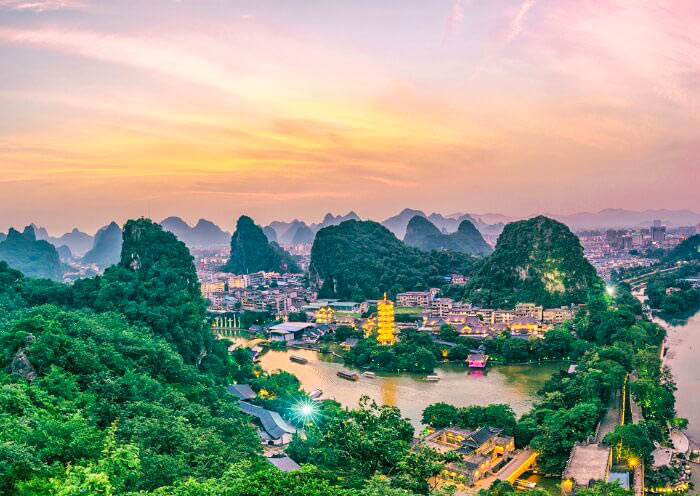
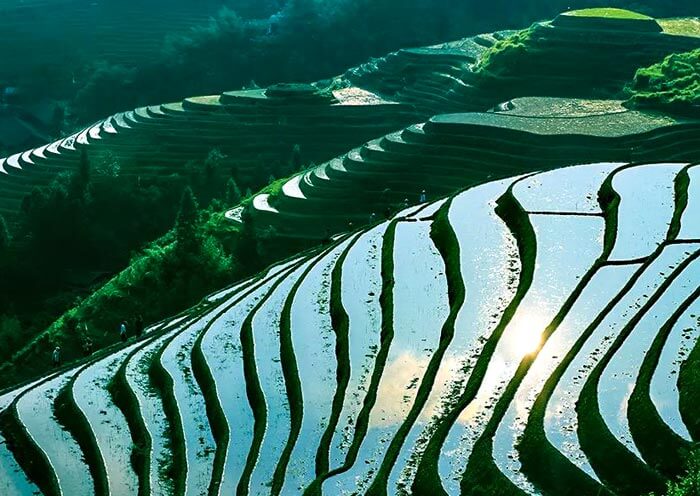
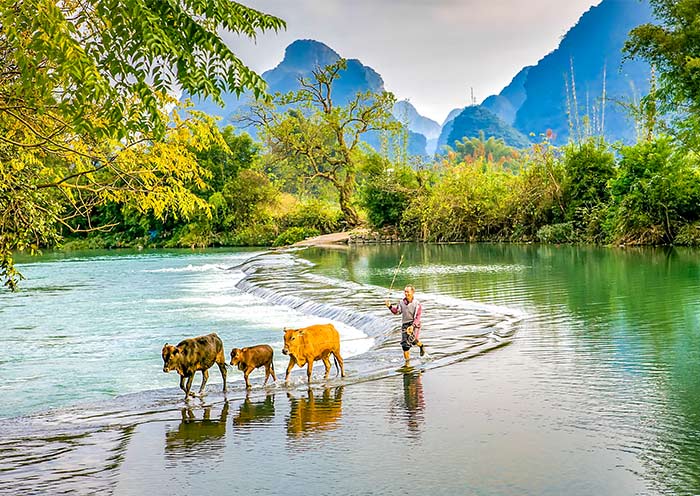
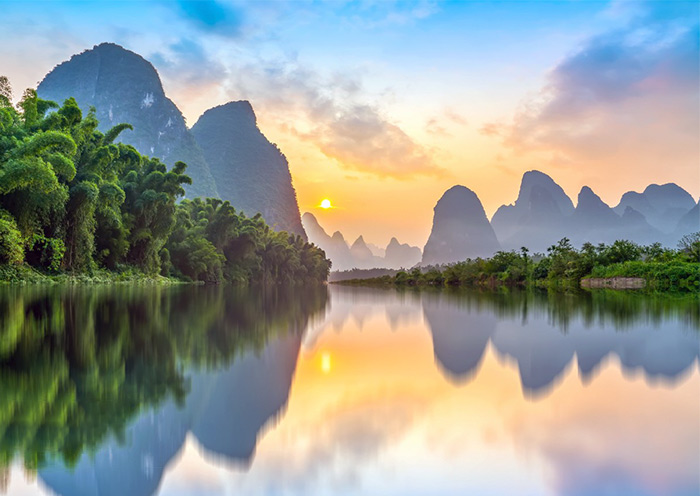
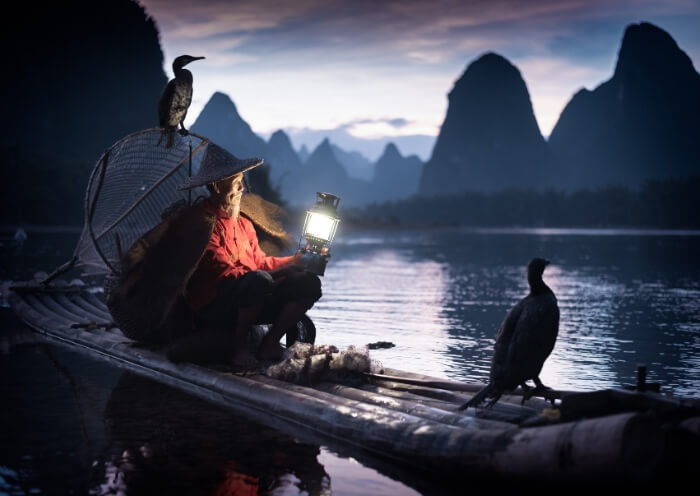


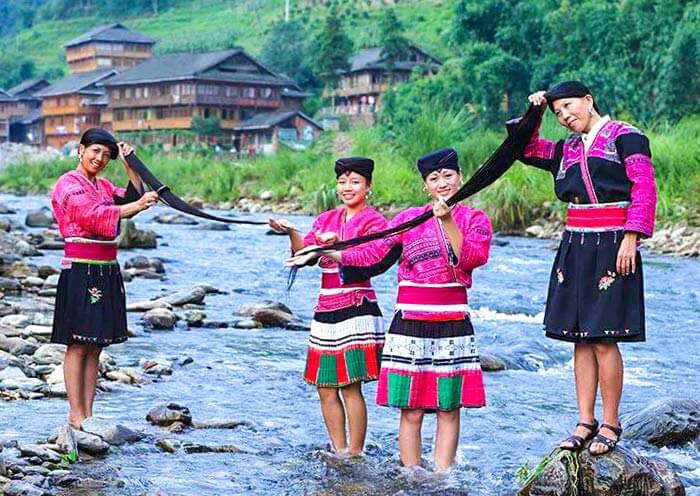
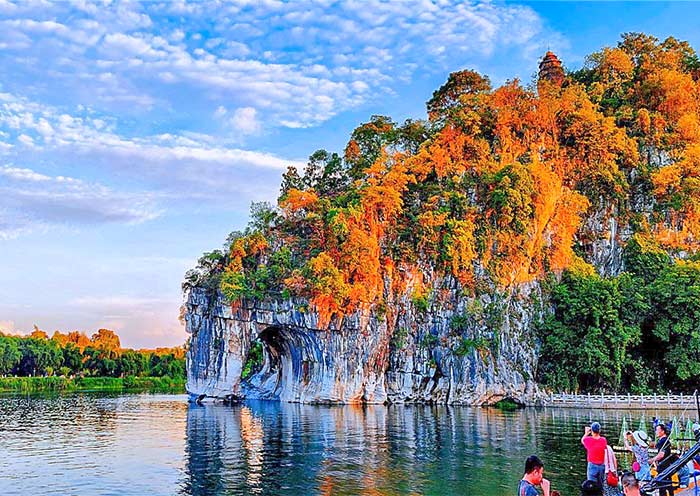
Create a tour based truly on your preferences, including all aspects of your travel in the destination